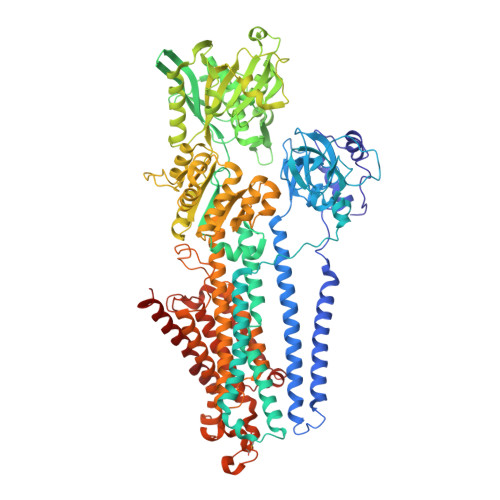Mechanism of the E2 to E1 transition in Ca2+pump revealed by crystal structures of gating residue mutants.
Tsunekawa, N., Ogawa, H., Tsueda, J., Akiba, T., Toyoshima, C.(2018) Proc Natl Acad Sci U S A 115: 12722-12727
- PubMed: 30482857
- DOI: https://doi.org/10.1073/pnas.1815472115
- Primary Citation of Related Structures:
5ZMV, 5ZMW - PubMed Abstract:
Ca 2+ -ATPase of sarcoplasmic reticulum (SERCA1a) pumps two Ca 2+ per ATP hydrolyzed from the cytoplasm and two or three protons in the opposite direction. In the E2 state, after transferring Ca 2+ into the lumen of sarcoplasmic reticulum, all of the acidic residues that coordinate Ca 2+ are thought to be protonated, including the gating residue Glu309. Therefore a Glu309Gln substitution is not expected to significantly perturb the structure. Here we report crystal structures of the Glu309Gln and Glu309Ala mutants of SERCA1a under E2 conditions. The Glu309Gln mutant exhibits, unexpectedly, large structural rearrangements in both the cytoplasmic and transmembrane domains, apparently uncoupling them. However, the structure definitely represents E2 and, together with the help of quantum chemical calculations, allows us to postulate a mechanism for the E2 → E1 transition triggered by deprotonation of Glu309.
Organizational Affiliation:
Institute for Quantitative Biosciences, The University of Tokyo, 113-0032 Tokyo, Japan.


















